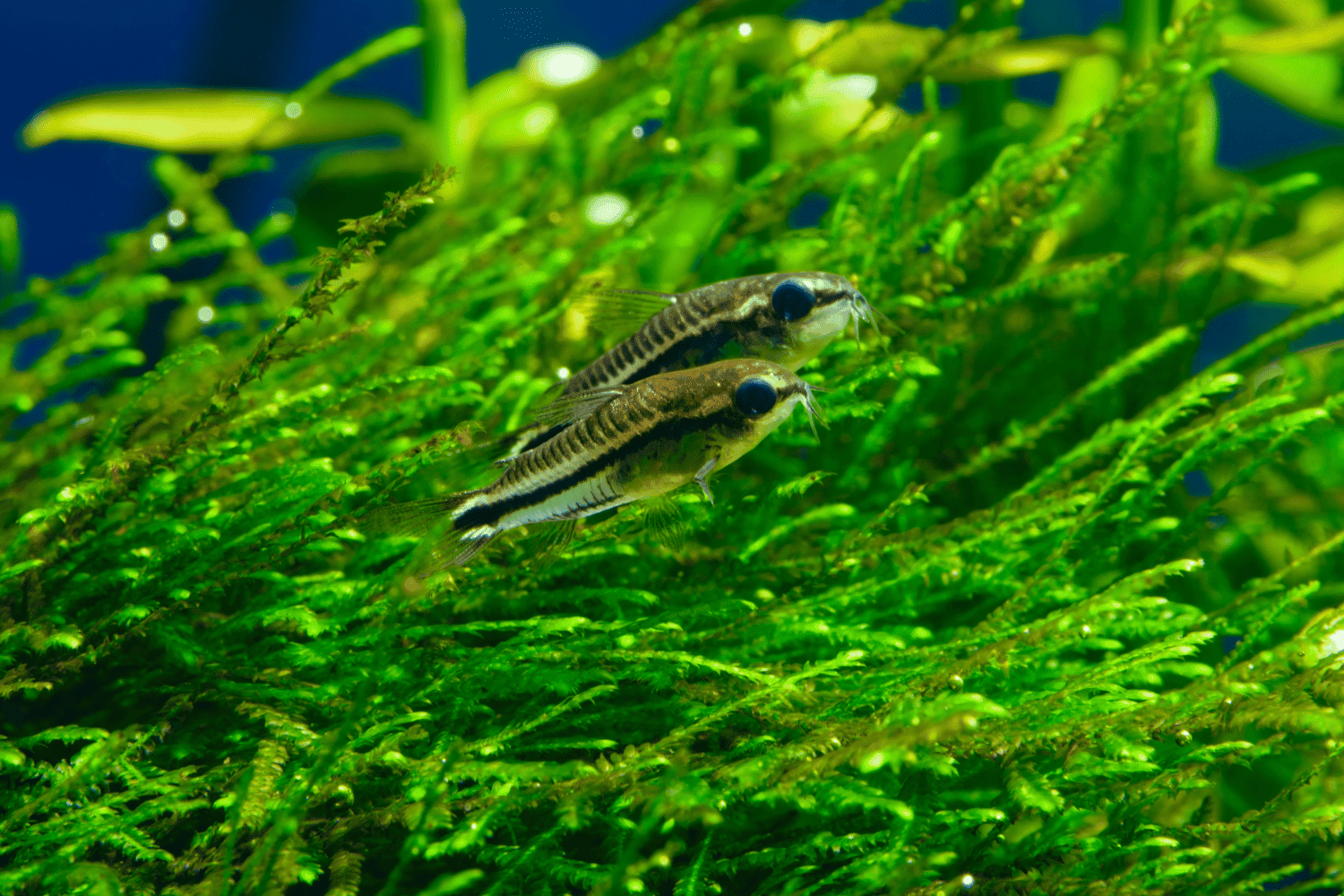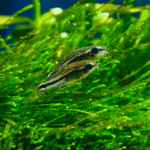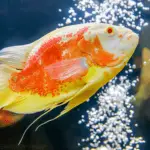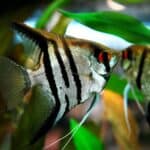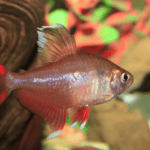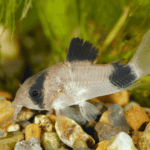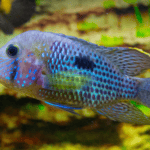As aquarium hobbyists, we have come across various species of fish that are fascinating and unique in their own ways. One such species, which has gained popularity among enthusiasts, is the Pygmy Corydoras. This small freshwater fish is native to South America, specifically the tributaries of the Amazon River basin. In this article, we aim to provide an overview of these captivating little creatures, and share the essential information needed to care for them in a home aquarium setting.
The Pygmy Corydoras, officially known as Corydoras pygmaeus, belongs to the family Callichthyidae. Known for their diminutive size, typically between 0.6 and 1.25 inches, these fish are an excellent choice for nano or small community aquariums. Although tiny in size, these unpretentious fish possess unique features, such as the presence of barbels, which they use to navigate and search for food along the substrate.
As we delve deeper into the world of Pygmy Corydoras, we will discuss their behavior, tank requirements, diet, and compatibility with other aquatic species. This information will not only help aquarists provide a comfortable and thriving environment for their fish but also gain insight into what makes these little aquatic gems so intriguing to hobbyists around the world.
Origins and Natural Habitat
In our study of pygmy corydoras, we discovered that they originate from South America. Specifically, their natural habitat spans across Brazil and the Madeira River drainage system. This river basin offers a unique environment for these small, yet fascinating fish.
In their native habitat, pygmy corydoras typically reside in slow-moving, shallow waters. These areas often feature dense vegetation, which provides both protection and feeding opportunities for them. The substrate in these habitats is usually composed of fine sand and/or dead leaf litter. Clean water and a stable water temperature are crucial factors in their habitat as well.
We observed that pygmy corydoras are a social species that tend to live in groups. This is an important factor when considering their wellbeing. In the wild, they often form shoals numbering in the dozens to hundreds, although smaller groups can be found as well.
Adapting in their native habitat has led the pygmy corydoras to develop some unique characteristics. For example, their small size and camouflage pattern of dark spots on a pale background help them blend in with the surrounding leaf litter and avoid predators.
In conclusion, understanding the origins, natural habitat, and behavior of the pygmy corydoras allows us to better care for them in captivity. By mimicking their native environments and social structures, we can ensure their health and happiness to the best of our abilities.
Appearance and Size
As we observe pygmy corydoras, we immediately notice their distinct size and appearance. These small fish are typically around 1 inch (2.5 cm) in length, making them one of the smaller corydoras species. Their size allows them to easily navigate their environment and contributes to their unique appeal.
The shape of pygmy corydoras is relatively rounder in comparison to other species of corydoras. Their elegant coloration also enhances their appearance: they are dominantly silver in color, with a captivating shimmer that beautifully reflects light. This coloration serves both as a camouflage and as a way to blend in with their natural surroundings.
Another striking feature of the pygmy corydoras is their fins. The dorsal fin, in particular, stands out with its distinct shape and patterning. These fins don’t only serve an aesthetic purpose; they also aid in propulsion and maneuverability, allowing the fish to gracefully swim and navigate through their aquatic habitat.
In addition to their fins, pygmy corydoras have barbels, which are whisker-like appendages near the mouth. These barbels play a crucial role in their survival as they help them search for food. They act as sensory organs, detecting small particles and debris on the substrate and assisting in locating food.
In summary, the appearance and size of pygmy corydoras make them a highly desirable species for aquarium enthusiasts. From their petite size to their shimmering silver coloration and unique fin and barbel structures, these fascinating fish are truly mesmerizing to observe.
Behavior and Temperament
Pygmy Corydoras are known for their peaceful temperament, making them an excellent addition to a community aquarium. Their gentle nature allows them to coexist with other non-aggressive fish species without any hassle.
In terms of their behavior, they tend to be active and social creatures, frequently engaging in playful interactions with their tank mates. They are usually found swimming near the bottom of the tank, searching for food and exploring their surroundings. However, it is not unusual for them to swim up to the surface for a quick gulp of air, thanks to their modified respiratory system allowing them to utilize atmospheric oxygen.
Having a well-planted aquarium with hiding spots is essential for these small catfish, as it gives them a sense of security and the opportunity to engage in their natural behavior. Providing them with a proper environment can also decrease stress levels and promote overall health.
To sum it up, Pygmy Corydoras showcase a peaceful and lively behavior, which makes them an ideal choice for beginner and experienced aquarists alike. Just remember to provide appropriate tank conditions, as this is key to supporting their well-being and ensuring they can display their natural temperament.
Diet and Feeding
As pygmy corydoras, our diet is primarily omnivorous, meaning we consume both plant and animal matter. In the wild, we are known to graze on a variety of foods, but in a captive environment, maintaining a balanced diet is essential for our health and well-being.
When it comes to feeding us, we appreciate a mix of live and frozen foods, including brine shrimp, mosquito larvae, and bloodworms. We particularly enjoy baby brine shrimp, which can be a great source of nutrients for us as they are small and easy to consume. It is worth noting that frozen bloodworms should be thawed before feeding, as this ensures they are safe and easy for us to eat.
In addition to live and frozen foods, we thrive on the inclusion of vegetable matter in our diet. Sinking catfish pellets and algae wafers serve as an excellent source of nutrients and can be provided on a regular basis. Alternatively, you can also offer us blanched spinach, which is both nutritious and easily digestible.
For our feeding schedule, we generally do well when fed once or twice a day. However, it is crucial to avoid overfeeding, as this can cause water quality issues and lead to stress. To ensure our dietary needs are met, consider rotating the food options on a daily basis. For instance, you can offer brine shrimp one day and algae wafers the next, keeping our diet varied and enjoyable.
In conclusion, providing a diverse and balanced diet for us is key to our long-term health and happiness. Remember to incorporate a blend of live, frozen, and plant-based foods, as well as monitor our feeding habits to ensure we are receiving the required nutrients. This approach will help create an ideal environment for us to thrive in and showcase our unique behaviors.
Breeding
Breeding pygmy corydoras is an interesting and rewarding experience for aquarists. We will provide a brief overview of the process, which includes preparing the breeding tank, identifying males and females, and caring for the eggs and fry.
To begin, we need to set up a suitable breeding tank. A 10-gallon tank with a sponge filter, heater, and spawning mops or java moss will suffice. The temperature should be maintained at around 75°F (24°C) and the pH should be slightly acidic.
Next, we must distinguish between males and females. Males are generally smaller and slimmer, while females have a rounder, fuller body. Introducing a group of healthy, mature pygmy corydoras, with a slightly higher ratio of males to females, increases the chance of successful breeding.
To encourage spawning, we can feed them high-quality, protein-rich foods such as live or frozen brine shrimp, daphnia, and bloodworms. Additionally, we can perform daily water changes of approximately 25% to simulate the rainy season in their natural habitat.
Once the pygmy corydoras begin spawning, the females will lay adhesive eggs on plants, tank walls, or the substrate. It’s important to either remove the eggs to a separate tank or protect them with a spawning mop to prevent them from being consumed by adult fish.
Eggs will usually hatch within 3-5 days, depending on temperature and water quality. After hatching, the fry should be fed high-quality, powdered or liquid fry food, as well as newly hatched brine shrimp for proper nutrition and growth.
In conclusion, by providing the right conditions and care, we can successfully breed and raise healthy pygmy corydoras. Patience and attention to detail are key ingredients for a rewarding breeding experience.
Tank Requirements
When setting up a tank for pygmy corydoras, one must consider several factors to ensure a healthy and comfortable environment for these small fish. In this section, we will discuss tank size, substrate, decor, and filtration.
A minimum tank size of 10 gallons is suitable for keeping a small group of pygmy corydoras. These fish are shoaling species and should be kept in groups of at least six individuals to thrive. A spacious tank allows them to exhibit their natural behaviors and reduces stress.
The substrate in the tank plays an important role in the well-being of pygmy corydoras. We recommend fine sand as the ideal substrate, as it is gentle on their delicate barbels when they forage for food. Gravel can sometimes be too abrasive and may result in injuries.
Adding natural elements such as plants, driftwood, and rocks in the tank provides hiding places and simulates their natural habitat. Live plants, like Java fern or Anubias, not only enhance the tank’s aesthetics but also help maintain water quality. Arrange driftwood and rocks to create cozy hiding spots, allowing the fish to feel secure.
Water temperature and tank conditions are crucial for the health of pygmy corydoras. As a freshwater species, they thrive in a stable temperature range between 72-78°F (22-24°C). Consistent water parameters are key; hence, a heater and a thermometer are essential.
Regarding filtration, we advise using a canister filter. This type of filter offers strong yet gentle water flow, providing sufficient filtration without causing stress to the fish. Choose a filter with adjustable flow settings that cater to the pygmy corydoras’ preference for slow-moving water.
In summary, a 10-gallon tank with fine sand substrate, live plants, driftwood, rocks, and proper water conditions is the best environment for pygmy corydoras. Providing a suitable living space, combined with an effective canister filter, ensures that these fascinating fish can thrive.
Water Quality and Parameters
In order to ensure the well-being of our pygmy corydoras, we must maintain ideal water quality and parameters. Our primary focus should be on water changes, pH, water hardness, and the importance of conducting regular water tests.
Regular water changes are crucial for maintaining a healthy environment for pygmy corydoras. Based on their natural habitat, we should strive to conduct water changes every week or two, replacing about 25-30% of the water. This helps maintain a stable environment and keep harmful substances, such as ammonia and nitrite, at minimal levels.
The pH level of the water is an essential parameter to consider. Pygmy corydoras thrive in slightly acidic to neutral water. We should aim for a pH range of 6.0 to 7.5. Drastic fluctuations in pH can cause stress to the fish, so we must ensure stability in the tank.
When it comes to water hardness, pygmy corydoras prefer soft-to-moderately hard water. The ideal range is between 2 and 12 dGH (degrees of general hardness). Keeping the water hardness within this range will protect the fish’s health as well as benefit their physical development.
To consistently maintain the desired water parameters, we need to conduct regular water tests. By monitoring pH levels, hardness, ammonia, nitrite, and nitrate, we can promptly address any imbalances or issues. We recommend using a reliable aquarium test kit to accurately analyze water quality.
In summary, providing a well-maintained aquatic environment with suitable water parameters is crucial for the health and well-being of our pygmy corydoras. By focusing on regular water changes, maintaining pH and water hardness, and conducting routine water tests, we can ensure a thriving and balanced habitat for these fascinating fish.
Community and Tank Mates
As avid fish enthusiasts, we know that the pygmy corydoras are excellent choices for a community tank. These peaceful fish coexist harmoniously with their tank mates and can be housed with various community fish species. In our experience, several suitable tank mates for the pygmy corydoras include otocinclus, rasboras, guppies, neon tetras, cherry barbs, and chili rasboras.
When setting up a community tank, our main focus should be on maintaining a stress-free environment for all inhabitants. Pygmy corydoras have a tranquil nature, which makes them compatible with species that have similar temperaments. Housing them with aggressive or large predatory fish should be avoided, as they may harm the delicate pygmy corydoras.
Otocinclus are algae eaters and make excellent companions for our pygmy corydoras. They share a penchant for clean tanks and can even help keep the algae levels in check. Rasboras, particularly the chili rasbora, dwell in the middle water column and exhibit a calm temperament, ensuring a harmonious coexistence.
Guppies are another popular community fish option. They add a splash of color to our aquarium and get along well with pygmy corydoras. Similarly, neon tetras are small, non-aggressive fish that thrive in a community setting. Their radiant colors and shoaling behavior make for a captivating display as they swim alongside the pygmy corydoras.
Finally, cherry barbs are also suitable tank mates for pygmy corydoras. Not only do they have a peaceful demeanor, but they are also hardy and adaptable to various environments. By choosing appropriate tank mates, we will create thriving community tanks where pygmy corydoras and their fellow aquatic friends can coexist in harmony.
Potential Diseases and Treatments
As with any fish species, pygmy corydoras are susceptible to a variety of diseases. In this section, we will discuss the most common diseases that can affect these small fish and the appropriate treatments for each.
One of the most common diseases affecting pygmy corydoras is ich, which is caused by a parasite. Also known as white spot disease, it is characterized by small white spots on the fish’s body and fins. To treat ich, we recommend raising the water temperature to around 82°F (28°C) and using an ich medication available at pet stores.
Another disease affecting pygmy corydoras is red blotch disease. This condition results in red blotches on the fish’s body and is often caused by bacterial infections. Treatment usually involves water changes and the use of antibiotics specifically designed for fish.
Bacterial infections in general can be a problem for pygmy corydoras, manifesting as fin rot, ulcers, or cloudy eyes. To treat these infections, we advise using fish-safe antibiotics or antibacterial treatments found in pet stores.
Parasites, aside from ich, can also cause issues for these small fish such as internal worms or skin flukes. In order to treat parasitic infections, we recommend using anti-parasitic treatments, again found at pet stores.
One natural remedy that we suggest for preventing and treating mild infections in pygmy corydoras is the use of alder cones. These cones release tannins into the water, creating a slightly acidic environment that is beneficial for the fish and can help inhibit the growth of harmful bacteria and parasites. Adding a few alder cones to the aquarium can be an effective and gentle method of maintaining the health of your fish.
Lastly, methylene blue is a multipurpose treatment that can be used to combat fungal infections, which may occasionally affect pygmy corydoras. This treatment can also be helpful in providing relief from stress-related conditions such as ammonia burns. Methylene blue can be found at most pet stores and should be used according to the manufacturer’s guidelines.
Overall, it is important to keep an eye on the health of your pygmy corydoras, and act quickly if any signs of disease are present. Ensuring proper water quality, optimal temperature, and appropriate tank conditions can greatly reduce the likelihood of disease occurrence.
Species Within the Corydoras Genus
Within the Corydoras genus, we can find several species of small freshwater catfish that are popular among aquarists. One of the most sought-after species is the Pygmy Cory, scientifically known as Corydoras pygmaeus. These little catfish are known for their small size, peaceful nature, and interesting social behaviors.
The Pygmy Cory, or Pygmy Cory Catfish, typically grows to be about 1 to 1.2 inches long. They are native to the small tributaries and slow-moving streams of South America, particularly in countries such as Brazil, Peru, and Colombia. These tiny catfish prefer environments with plenty of hiding spots, such as dense vegetation or driftwood. In aquariums, they thrive in groups of six or more and enjoy bottom-dwelling among plants and other decorations.
Cory Catfish, sometimes referred to simply as Corys, are known to be very peaceful and get along well with other non-aggressive fish species. They are often chosen to coexist with other community fish in home aquariums. In addition to their peaceful demeanor, Pygmy Corys are also excellent scavengers, helping to maintain a clean environment by consuming uneaten food and debris that falls to the bottom of the tank.
Some other popular species within the Corydoras genus include:
- Corydoras aeneus (Bronze Cory)
- Corydoras sterbai (Sterbai Cory)
- Corydoras panda (Panda Cory)
- Corydoras julii (Julii Cory)
All of these species have unique appearances and color patterns, but they share similar characteristics, such as their peaceful nature and ability to adapt to various freshwater environments. When considering acquiring Corys for a home aquarium, be sure to research their specific needs and preferences to ensure a healthy and harmonious community.
Frequently Asked Questions
What is the ideal tank size for Pygmy Corydoras?
We recommend a tank size of at least 10 gallons for Pygmy Corydoras to provide ample space for them to swim and explore. Ideally, a 15 to 20-gallon tank is best, as it allows room for a larger group of Pygmy Corydoras to live happily and exhibit natural behaviors.
How long is the average lifespan of Pygmy Corydoras?
The average lifespan of Pygmy Corydoras is 3 to 4 years. Of course, this can vary based on factors such as water quality, diet, stress, and overall care.
What are the key aspects of breeding Pygmy Corydoras?
Breeding Pygmy Corydoras involves creating a comfortable environment with clean, soft water, and a temperature that is slightly warmer than their usual habitat (around 78°F). Providing a sufficient diet with live foods and maintaining a conducive tank setup with hiding spots like plants and caves will encourage breeding behavior. It is also essential to house a minimum of 6-8 Pygmy Corydoras together, as they are more likely to breed in a group.
Do Pygmy Corydoras have any specific dietary requirements?
Pygmy Corydoras are omnivorous, so we suggest a varied diet consisting of high-quality pellets or flakes, along with frozen or live foods such as brine shrimp, daphnia, or bloodworms. This variety will ensure they receive all the necessary nutrients to maintain overall health and vibrancy.
How many Pygmy Corydoras can comfortably live in a 5-gallon tank?
In a 5-gallon tank, we would not recommend housing more than 4-5 Pygmy Corydoras. However, they are social fish, and they will thrive in a larger group of 6-8 individuals. Therefore, we strongly advise using a bigger tank, such as a 10-gallon or larger, to provide a suitable environment for the entire group’s wellbeing.
Are there any interesting facts about Albino Pygmy Corydoras?
Albino Pygmy Corydoras are a rare variation of the species, exhibiting a lack of pigmentation, which results in a lighter, almost white coloration. They share the same care requirements as the standard Pygmy Corydoras, making them a fascinating and unique addition to a community tank. One interesting fact about Albino Pygmy Corydoras is that their sensitive skin makes them more susceptible to the light, so it’s crucial to provide them with plenty of shaded spots in the tank.
